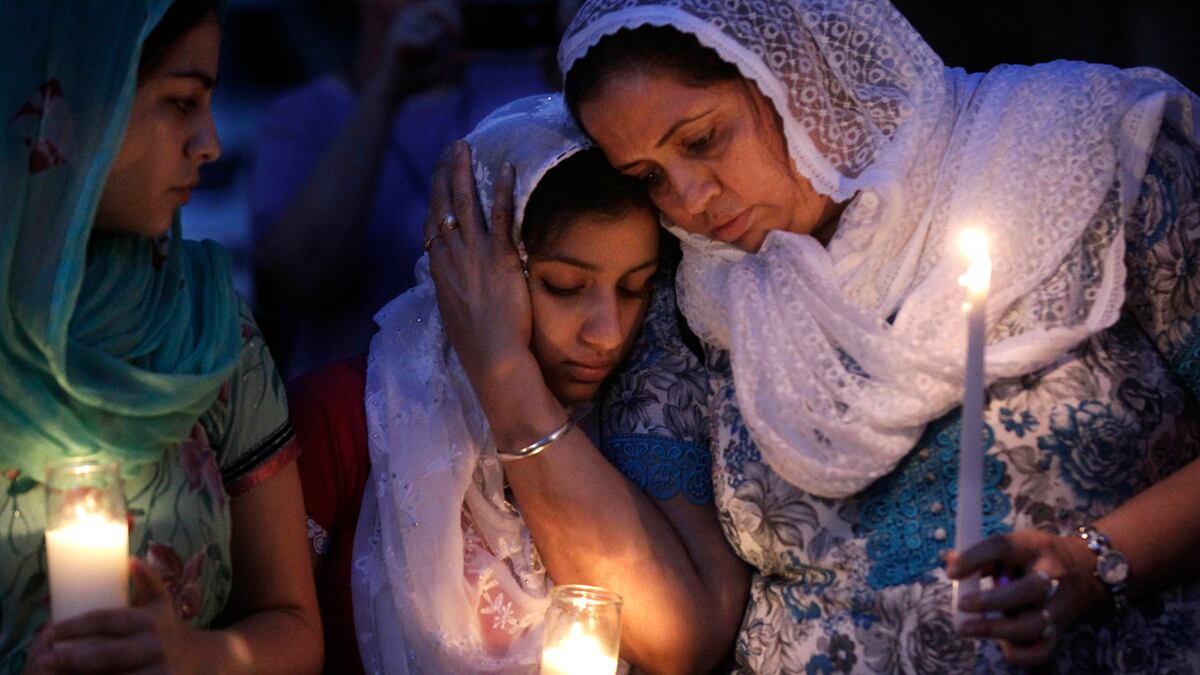People threaten other people all the time. In the age of instant online communication, it’s that much easier to say, “I’m going to kill you.” So how can we assess whether a threat made on, say, Twitter or Facebook is harmless, or whether it needs to be taken seriously? Even more difficult, how can we tell when someone who is not making clear threats is actually plotting to commit a serious crime or murder?

The simple answer: we can’t.
That harsh reality has become all the more apparent in the wake of the last week’s mass shooting at a Sikh temple in Wisconsin, which was allegedly committed by a white supremacist who was being tracked by anti-racism groups.
A new report released Wednesday by the National Consortium for the Study of Terrorism and Responses to Terrorism, or START, showed that murders carried out by right-wing extremist groups have been on the rise recently—nearly doubling since the mid-2000s. Even so, sorting through the online posts of thousands of white supremacists to find viable threats is “next to impossible,” said Mark Potok, a senior fellow at the Southern Poverty Law Center.
Wade Michael Page, the man suspected of shooting and killing six Sikh worshippers on Sunday, had been followed for years by the SPLC and the Anti-Defamation League—both of which constantly monitor and catalog tens of thousands of white supremacists, white-power organizations, and other explicitly racist groups.
The attack was the latest in a rising tide of violence committed by far-right individuals and groups, largely against racial or ethnic minorities. According to the START report, far-right extremist individuals or groups committed 21 ideologically motivated homicides between 2008 and 2010, nearly twice as many as they did between 2005 and 2007.
START found that 348 people have died at the hands of far-right individuals or groups in the U.S. between 1990 and 2010—nearly half of those in the 1995 Oklahoma City bombing. The report found basic trends, but no clear pattern that might provide a blueprint for preventing another Oak Creek or Oklahoma City.
Among those patterns is a tendency for attacks to be “bottom-up,” that is, not organized by the leader of a cohesive group. Three quarters of the attacks studied were of this nature, either the work of a small faction of people, or “lone wolf” acts, which the Oak Creek shooting appears to have been. Just over one third of all ideologically motivated homicides carried out by right-wing extremists “were perpetrated by a lone individual,” said Joshua Freilich, a professor of criminal justice at John Jay College and an author of the START report.
In a separate study currently under review for publication by several terrorism journals, Freilich and two colleagues set out to determine what factors differentiate violent from nonviolent far-right extremist groups. Among the other patterns the researchers found were that longer-established, larger groups that recruited young members, particularly at protests, were more likely to advocate for and engage in violence. Groups that focused on national as opposed to local issues were also found more likely to be violent, and organizations based in the American West, Northeast, and Northwest were more likely to commit acts of violence compared to groups in the South.
Despite the patterns, Freilich said, it remains “very, very tricky” to predict who will decide to turn words into action, so non-governmental organizations like the ADL as well as federal law enforcement end up engaging in a process of educated guesswork to find the next Wade Michael Page or Timothy McVeigh before they act.
Mark Pitcavage, the ADL’s director of investigative research, said the group “routinely notifies law enforcement” about potential threats on the local, state, and federal levels, but that there’s no algorithm or foolproof methodology for determining who is a genuine security threat.
Pitcavage said that identifying real threats typically entails combing through social-media sites and looking for hallmarks—certain symbols, numbers, and pictures—popular with white supremacists. Sometimes, there are enough red flags for the organization to notify authorities immediately. For example, a now-defunct MySpace profile of a neo-Nazi who identified himself as 88charles88 (the number 88 is commonly used by neo-Nazis as code for "Heil Hitler," because H is the 8th letter of the alphabet) contained a murky threat against then-president elect Barack Obama (“the dead man that just won the vote of n***r-loving America”) and declaration that “now it’s time to fight for my blood and my land” was enough for the ADL to notify the Secret Service.
If the ADL determines that a known white supremacist is a current member of the military, they will inform the Army’s Criminal Investigation Division. (Page served in the U.S. armed forces from 1992 until 1998, before he was being tracked.)
But simply being a racist—even a racist who is openly involved with an often-violent white power organization like the Hammerskins, as Page was—does not on its own prove violent intent. “Preaching hate won’t be enough to warrant law enforcement security,” Freilich said.
And, of course, it’s not a crime to speak your mind. “Hate speech is protected speech under the First Amendment,” said James Jacobs, a constitutional law professor at NYU Law School. “You can say any vile thing you want to say.”
Almost anything. Earlier this week, a Twitter user with the handle @obamasmistress tweeting that “people are gonna die” at the Longacre Theater in New York, where Mike Tyson is performing a one-man show. During an onslaught of threats, @obamasmistress also said he or she would kill celebrities from Kristen Stewart to Justin Bieber. After the July 20 mass shooting in Aurora and Sunday’s shooting spree, the New York police erred on the side of caution, asking a court to order Twitter to turn over the location and IP address of @obamasmistress’s account, which has since been taken down.





